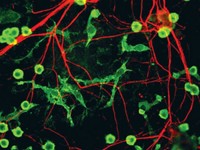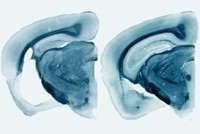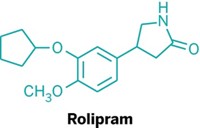Advertisement
Grab your lab coat. Let's get started
Welcome!
Welcome!
Create an account below to get 6 C&EN articles per month, receive newsletters and more - all free.
It seems this is your first time logging in online. Please enter the following information to continue.
As an ACS member you automatically get access to this site. All we need is few more details to create your reading experience.
Not you? Sign in with a different account.
Not you? Sign in with a different account.
ERROR 1
ERROR 1
ERROR 2
ERROR 2
ERROR 2
ERROR 2
ERROR 2
Password and Confirm password must match.
If you have an ACS member number, please enter it here so we can link this account to your membership. (optional)
ERROR 2
ACS values your privacy. By submitting your information, you are gaining access to C&EN and subscribing to our weekly newsletter. We use the information you provide to make your reading experience better, and we will never sell your data to third party members.
Biological Chemistry
Activating Protein Garbage Disposals Could Help Treat Alzheimer’s
Neuroscience: Small molecule keeps protein-degrading proteasomes active in mouse brains
by Michael Torrice
December 30, 2015
In neurodegenerative diseases, certain proteins misfold and clump up in the brain. For example, Alzheimer’s disease produces aggregates of amyloid-β and tau.
A new study in mice reports that aggregated tau can impair the function of proteasomes, garbage disposals that cells use to break down misfolded or damaged proteins. This impairment encourages more tau clumps to accumulate in the brain. Ramping up the activity of proteasomes with a small molecule overcame this impairment, leading to fewer tau aggregates and improved cognitive function in the mice.
Scientists have previously found evidence that the proteasome system—a protein complex—becomes defective in neurodegenerative diseases, says Roland John Mayer of the University of Nottingham, who was not involved in the work. The clumps of proteins found in patient brains often are tagged with a small protein called ubiquitin, which signals the proteasome to chop up and clear out the labeled protein.
In diseases such as Alzheimer’s, “certain proteins get tagged for destruction but they’re not removed,” says Natura Myeku of Columbia University, who is the first author of the new study. She and her colleagues wanted to study what went wrong and how to possibly overcome the hurdle.
They studied genetically engineered mice that express a mutated tau protein prone to aggregating. These mice are widely used to study tau-related dementia.
Proteasomes isolated from these mice had less protein-dicing activity than those from normal animals. The team thinks that tau aggregates glom onto the proteasome and disrupt its normal functions.
To help proteasomes resist disruption by tau tangles, the researchers looked for a way to turn up the complex’s activity. Previous work showed that a proteasome becomes more active as enzymes add phosphates groups to the complex. So the scientists turned to the small molecule rolipram, which turns on a signaling pathway that activates one such phosphorylating enzyme.
When given to 4- to 5-month-old mice with the tau mutation, the molecule led to more active proteasomes, fewer tau aggregates, and improved performance in a test of spatial memory, compared with control mice (Nat. Med. 2015, DOI: 10.1038/nm.4011). But when the team gave the compound to 8- to 10-month-old mice, which have accumulated large amounts of aggregated tau, they saw almost no change in those three measures. Myeku wonders if longer treatment durations or a more potent molecule would be necessary to produce an effect in the older mice.
Nottingham’s Mayer thinks the new study offers a detailed mechanism of how tau aggregates play a role in disrupting proteasomes. The rolipram findings, he says, suggest a possible therapeutic strategy for Alzheimer’s disease, but he cautions that the pathway targeted by the molecule has many functions unrelated to proteasomes in cells, a possible source of side effects.
Myeku and colleagues plan to study molecules related to rolipram in mice with other neurodegenerative diseases and will explore targeting other pathways that could increase proteasome activity.






Join the conversation
Contact the reporter
Submit a Letter to the Editor for publication
Engage with us on Twitter